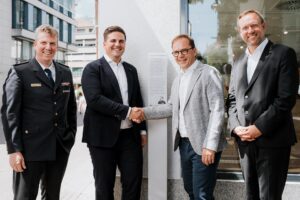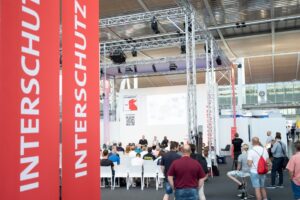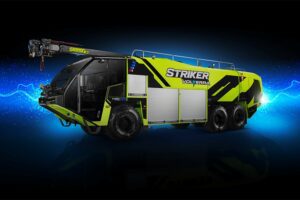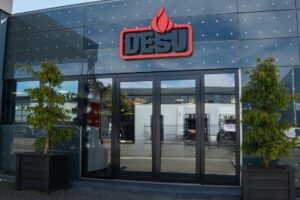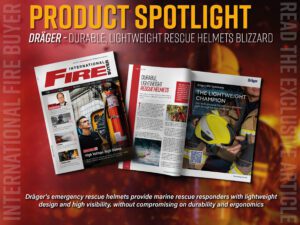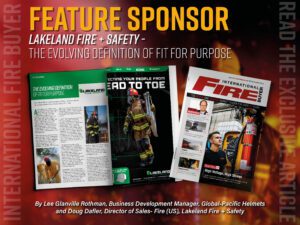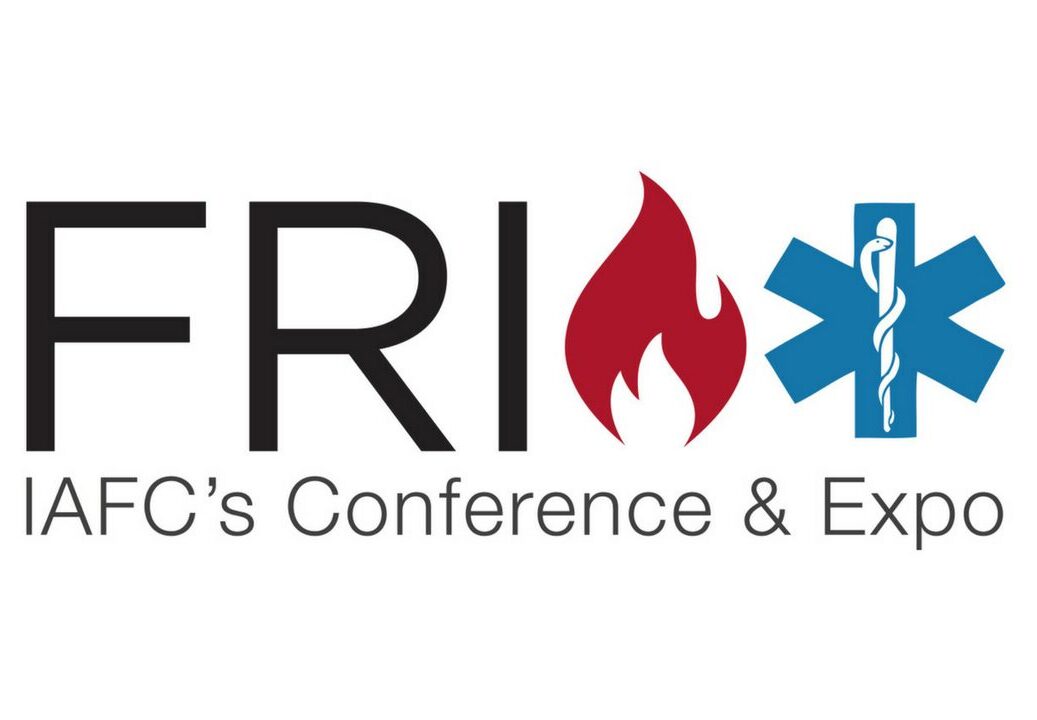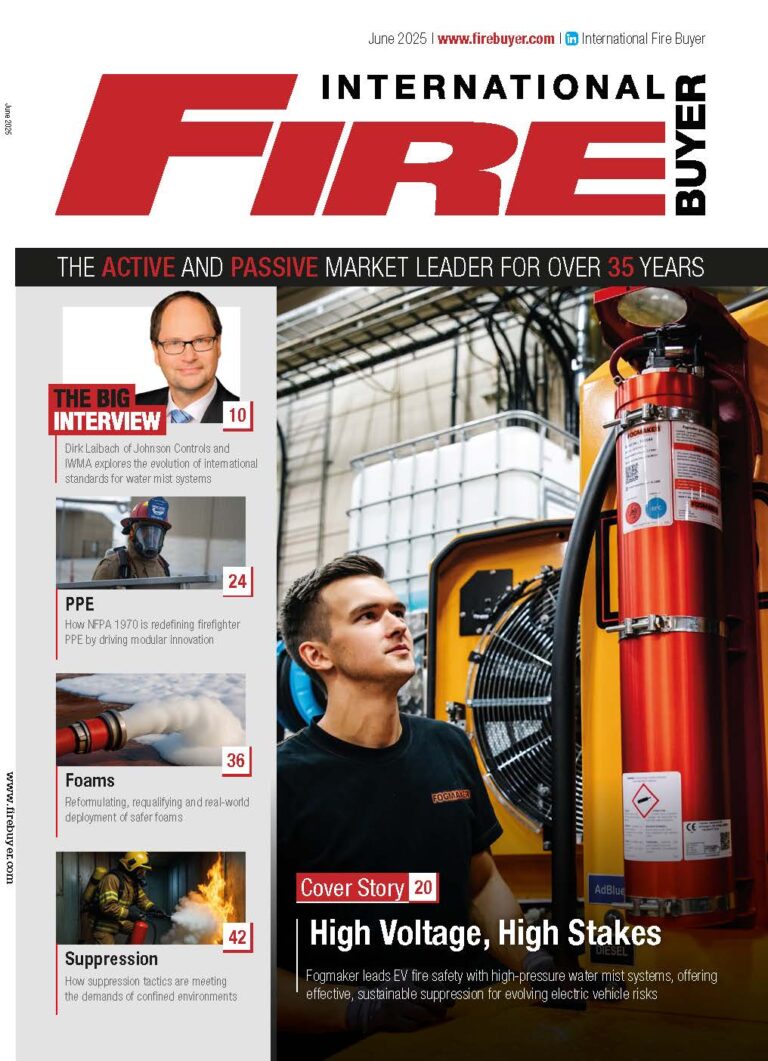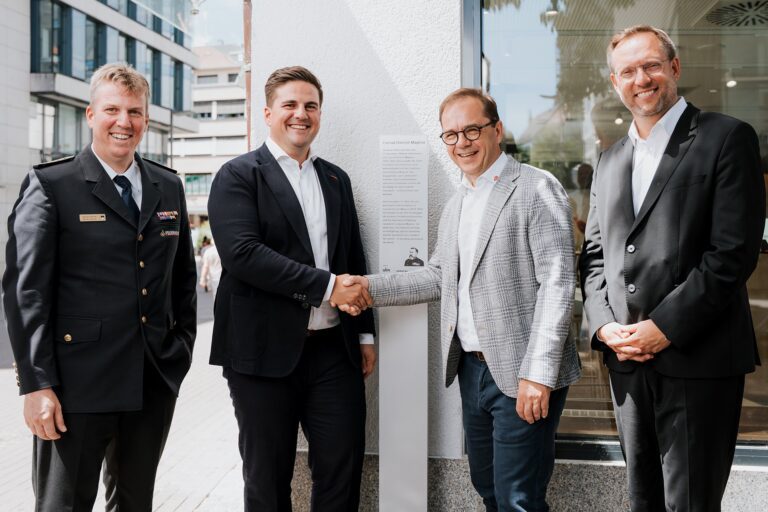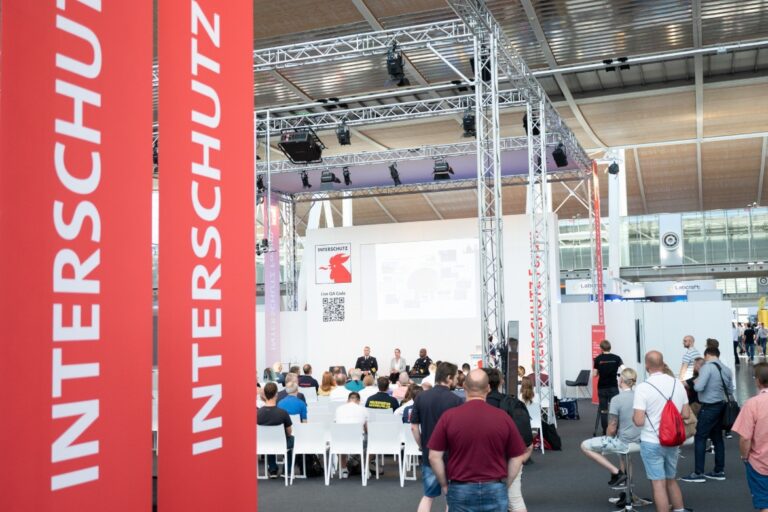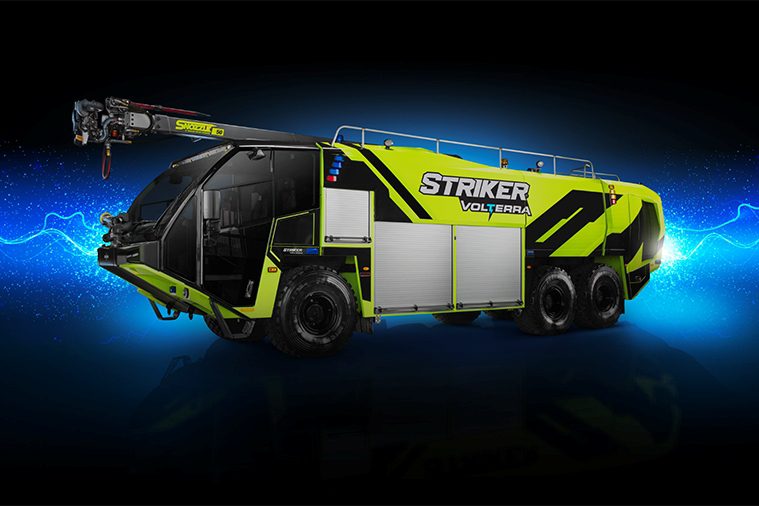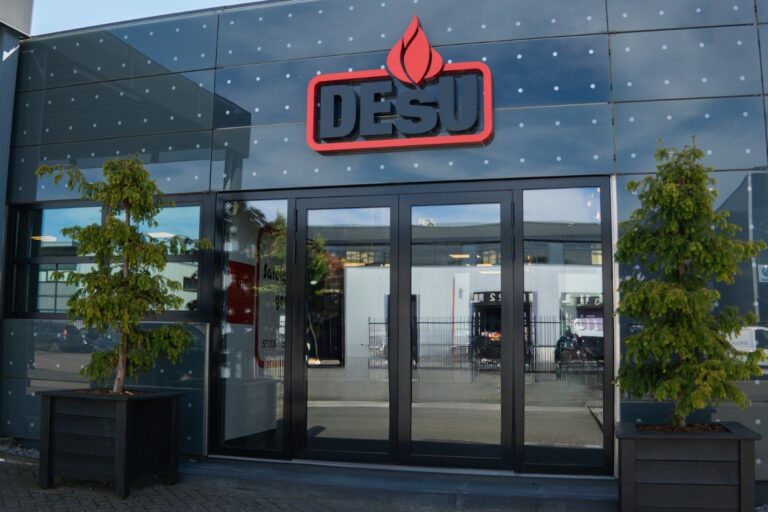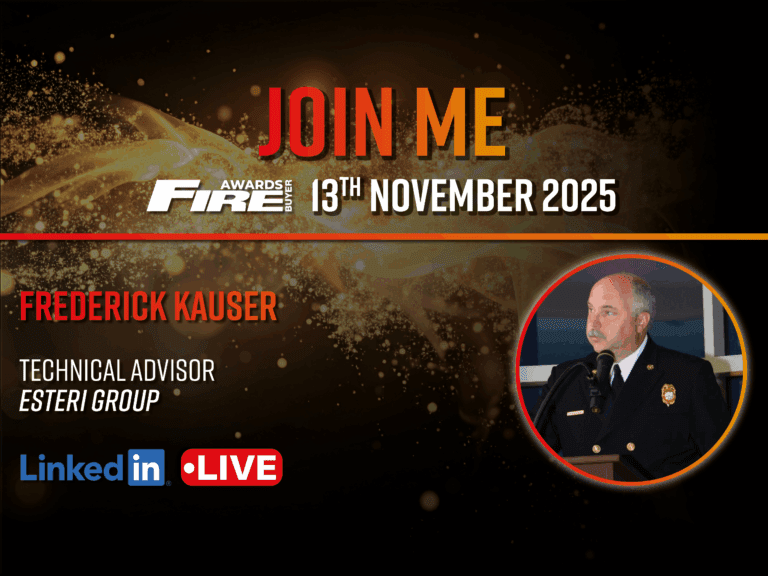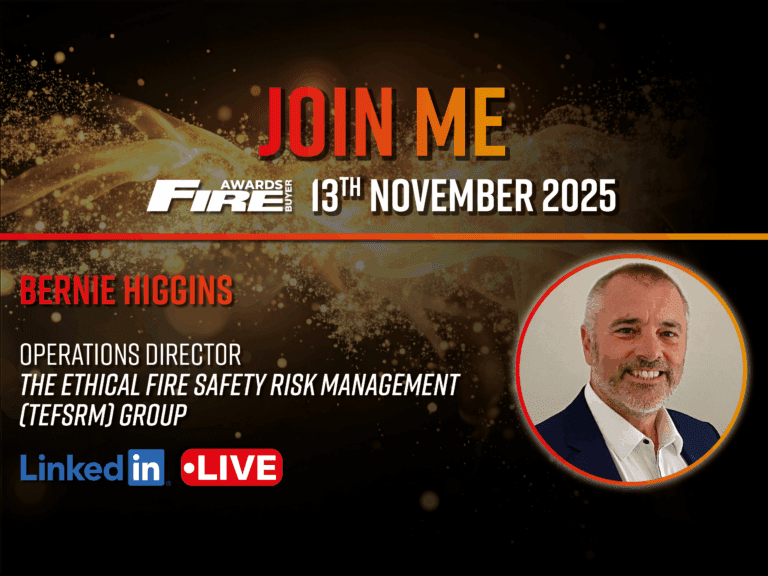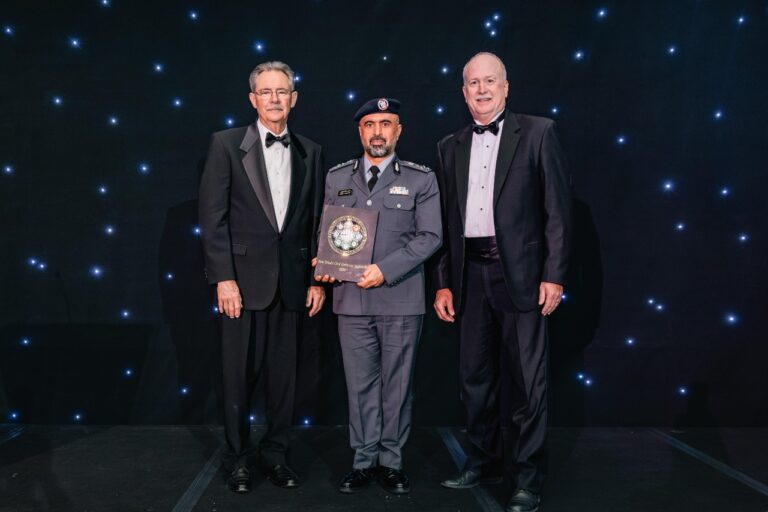Constantly adapting and growing through industry research
Fire Chief, Brian McKinney, talks to International Fire Buyer about the innovative training centre that has taught over 17,000 fire-fighters from 39 US states and 31 different countries
Could you please give us a brief history of your training centre and how it has developed over time?
The Dallas Fort Worth Airport Fire Training Research Centre (FTRC) opened in 1994; run by Propane, due to environmental concerns in the US. The centre was funded by the Federal Aviation Administration (FAA) and DFW airport. £3.8 million was funded by the FAA and DFW Airport matched it equally to form a 50/50 grant. The FAA also supported several other centres across the US.
The FTRC was originally designed to be a regional fire training centre, with aircraft rescue fire companies in the region sending its fire-fighters to receive their annual training. In 1994, the centre had a 6 storey structural tower and an aircraft SAFT (structured aircraft fire trainer); a mock up of a Boeing 737. It also had a fuel spill burn area that was run by Propane, ensuring it met the category 10 and Index E. Starting with the training of our own personnel in 1994, we began to open up the centre up to the region – and really to whomever else would come along. We really saw the training centre begin to grow beyond the region. Personnel from outside the region and then from outside of the US started attending training here.
In 2007 we realised that with this growth we really had to re-life the facility so we asked the FAA if they would partner with us again. By this time most of the facilities that the FAA had partnered with – other airports and other bodies across the US – were getting into a sort of dilapidated state. The FAA really took interest in our facility here because of the high standards we had maintained over the years – how we were really effective stewards of the initial grant that was given. In fact, by this time we had trained around 12,000 fire-fighters from around 20 different countries and 20 different US states.
The FAA really noticed our great impact, not only on the region and the US but also internationally. They decided to reinvest in DFW airport and they gave us £12 million to upgrade our facilities. DFW airport matched it with a £6.3 million grant. That brings us to where we are now; we were able to add additional training props and a very high tech classroom. To date we have now trained over 17,000 fire-fighters from 39 US states and 31 different countries.
Clearly you’ve catered to a vast array of students and organisations. How would you say that your training has been able to appeal to global students, not just to those from your own region?
What we do is really get to know what our customers’ needs are. We have sessions where we try to understand what their needs are so that we can cater the courses to them. Some students and organisations want to focus on real basics training; others require more advanced training or even command training. So we listen closely to them and really customise the course to fit their needs.
We have several basic courses we teach as these prove to be very popular. Our basic aircraft rescue and fire-fighting course is a 120-hour course and it is probably the most in depth basic ARFF course worldwide. Other organisations may just want vehicle operated training – so we’ll develop an emergency vehicle operation course for them.
Part of our success is that we really listen to what our customers’ needs are but we also constantly update our curriculum. We have a go-team concept at DFW airport – anytime that there is a crash or aviation disaster in the US, we send a team of personnel out to the particular site to actually learn from what has happened and research the industry. We bring all these lessons learned back to our facility; we discuss what we need to change in our curriculum. For example, one thing that is having a huge impact on aviation fire rescue service is social media. That’s something that we have to make our students and fire-fighters aware of. The industry is not what it was 15 years ago when it would take quite some time for local media to gather information about the incident and on site. Now pictures and videos are posted instantly and this can impact the way that fire-fighters approach a rescue. So we use all our new data and lessons learned; we also learn from students that attend the centre.
We don’t think we know it all – we are open to new ideas and new perspectives from the international community. This is what got us working so closely with research. There are a lot of theories out there and we need to put those theories to the ground and really test them, to improve industry training and knowledge.
Your training certainly seems unique with this constant research and adaptation. What would you say is so special about your facilities and simulators? Could you tell us more about your classroom and the high-tech equipment you are using too?
Starting with the classroom, I would say we have a very progressive training programme. When you come to DFW airport, there is very little downtime. A lot of training facilities have a lot of downtime because you’re often working in a remote location. We want to make sure that we utilise technology to help us execute training more effectively, in the hopes that when our students come here they get the maximum training time allotted to them – if you are taking a 40 hour course you should be receiving 40 hours of good, solid training. We started focussing on our classroom which now has a state-of-the-art 3D video wall and collaborative tables. Our instructors are able to go to a touch screen wall that’s 6ft by 9ft and they are able to actually go inside and move through the aircraft.
The software is run using a gaming engine and controlled like a video game. Instructors can show students the hydraulic systems on several models of aircraft; they’re able to show them the fuel, take them into the cabin and walk down the aisles so that they can see how doors open from the inside or the outside – the latches that they will have to move and rotate. We can cut half of the skin away so that students can see a comparative analysis of how the seats look from the exterior – so, for example, if you have a high reach extendable turret you’d know where to actually put those through the skin.
We also have a mock airport that has 2 runways on it. It features all details required by the FAA – all the signs, lighting and markings – and all to scale. Students can drive down taxi ways and fly down runways both in daylight and in night time so that they can see the lights, where the hold bars are etcetera. The strategies and tactics software we have is really special. If you’re from London, Heathrow we can pull up London Heathrow Airport onto our screen and perform strategies and tactics to scale at a student’s own airport. We could put an A380 on their runway and assorted fire apparatus and create scenarios for them to discuss with classmates – and then do the same for students from Gatwick or Edinburgh.
Not only does the instructor have a touch screen but so does every student in the classroom. Their computers have the same software so that they can respond to a disaster in smaller groups. The instructor can pull a scenario onto the larger screen to enable an even larger discussion with all students. This creates very intensive learning environments. Students are now training other students and using their individual fire-fighting experiences. They can dialogue why they did something while another team used another method. That creates a lot of interaction, which is what we really wanted to do. We wanted to get away from just having PowerPoint slides and whiteboards – we wanted to get all the students engaged; constantly adapting and interacting. We also have pop quiz software, so whilst an instructor is teaching the course, he or she can simultaneously send out questions to see if students are actually grasping what is being taught. If only a small percentage of the class is getting the content then the instructor can adapt their teaching methods, instead of waiting until the exam to establish the academic levels of students.
We also have two Boeing 727s on our field. One is in a passenger configuration; the other is in the cargo. After we have engaged students visually, using the software, we then take them outside and strip their visuals and sense of sight by putting masks on them. We put them inside aircraft that are completely smoked up – you can’t see a thing! What they have just learned about the seating configurations, how the aisles are positioned, search and rescue methods from inside the classroom – all this new knowledge is immediately put into real life practise as we progressively introduce them into the aviation fire rescue system.
After they have mastered this stage, we take them into our simulators. We are now able to not only produce a smoke filled environment but to introduce heat into the simulation. In our 737 simulator we have 7 fire places: A cockpit fire, galley fire, cabin fire, laboratory fire, two engine fires and a break fire. In the A380 there are 13 fire places: 2 engine fires, a break fire and an APU fire accessed from the exterior and multiple cabin fires and cockpit fires in the interior. Due to the expansion of the cargo industry, half the aircraft on the inside is cargo fire. We have traditional cargo hold fires in the belly, everything behind the wings is also cargo fire, and then on the top deck there is another cargo fire place. There are no A380 cargo planes at the moment but there will be – and we are already preparing our students and personnel for that.
The fuel burn area that surrounds that A380 cargo mock-up is also run by propane. We can create a large fuel spill burn fire and with the propane we can shut it off at any time. It’s also repeatable – we can set certain zones on fire and have students fight those fires, then if something goes wrong we can pull them back out, train them again and put them back into the exact same scenario. It definitely helps with the muscle memory element of learning how to fight fires.
We have a hydrocarbon system inside that pit too. We use a fuel called e3 – jet fuel with all the volatile compounds such as benzene stripped from it to make it environmentally friendly. Just like any other fuel, it all depends on how the wind blows. When we light that up there are no emergency stops that let you shut it down. The students have no option but to put that fire out – so we usually save that until the very end as a sort of graduation task.
We also have, connected to an active runway, a roadway that connects the training facility with our west diagonal cross wind. This was designed so that we could land aircraft at DFW Airport, open up the barrier fence and pull aircraft in, decommission them and start doing research on actual aircraft. We are currently working on a research and development partnership with the FAA now so that a large part of their research can be done here. Research is currently underway on areas such as: Cargo fires, new fuels, new extinguishing agents and new gear. This is attracting lots of manufacturers now who can put their wares and gear into practise to see how effective it is in fighting aviation fires.
It’s interesting how pragmatic your approach is – it’s not just your research but your students that shape training and course content. How do you see your recent agreement with the Embry Riddle Science team affecting FRTC training and curriculum also?
That partnership has helped us immensely. We have 3 different programs: we train students here at DFW airport, we also go to train fire-fighters at several other airports including San Francisco, Bermuda and Ottawa, and we are also about to roll out our online training product. I think that Embry Riddle looked at this and were impressed with how innovative and progressive our research and training is.
They, in turn, were able to introduce us to the FESHE model (Fire Emergency Service Higher Education curriculum) – we were able to look at our course curriculum and revamp it to fit into FESHE. Now students at DFW airport can also earn college credits whilst they are getting their required/annual training. We really think of that as a win, win, win for everyone – for us and for Embry Riddle – as we really try to enhance aviation fire rescue research and training – and for the students who benefit from such high quality curriculum.
Similarly, how will the recent MOU on fire training with Singapore Changi Airport benefit both organisations involved?
Both of our organisations have been interacting since August 2004. Changi Airport group came over here after hearing about our organisation. They wanted to see how innovative we were. We established a very good friendship and we’ve gone over there to help with their training and live drills since then. We found out that we really are kindred spirits – innovative, forward thinking and with the hopes of advancing aviation safety – it seemed natural for us to get together and share our knowledge internationally. We fight the same fires after all. Changi Airport has had QF32 and they’re used to dealing with A380s too. We just received our first A380 – a diversion from Houston. Although we’ve only had one A380 land here, our fire-fighters are already prepared to integrate and deal with any A380 incident.
Both our organisations hope to bridge the gap between the US and the Asian Pacific – sharing information will benefit the industry as a whole. Changi Airport plans to send a couple of their fire service management personnel to DFW airport to learn from not only our fire training research but our fire services organisation too. Changi Airport hopes to integrate itself with us, learn how we do things; learn our practises, and then Dallas Fort Worth personnel will reciprocate and send some of our fire service managers there to immerse inside their organisation.
One of the things I’m very impressed with is how their emergency services personnel grasp business continuity (with them having two runways and handling 50 million passengers) they really understand that when one of their two runways is shut down, it has an impact on the whole aviation system and the country as a whole. Changi Airport has an excellent grasp of that, which our personnel can really learn from. We have 7 runways so it’s just a case of landing aircraft on another runway when needs be. I saw their connection into their business structure though, how they really integrate into not just the emergency services but into customer service and into concession. I’m looking for our personnel to learn some important new lessons when they make their visit.
www.dfwairport.com/firetraining

